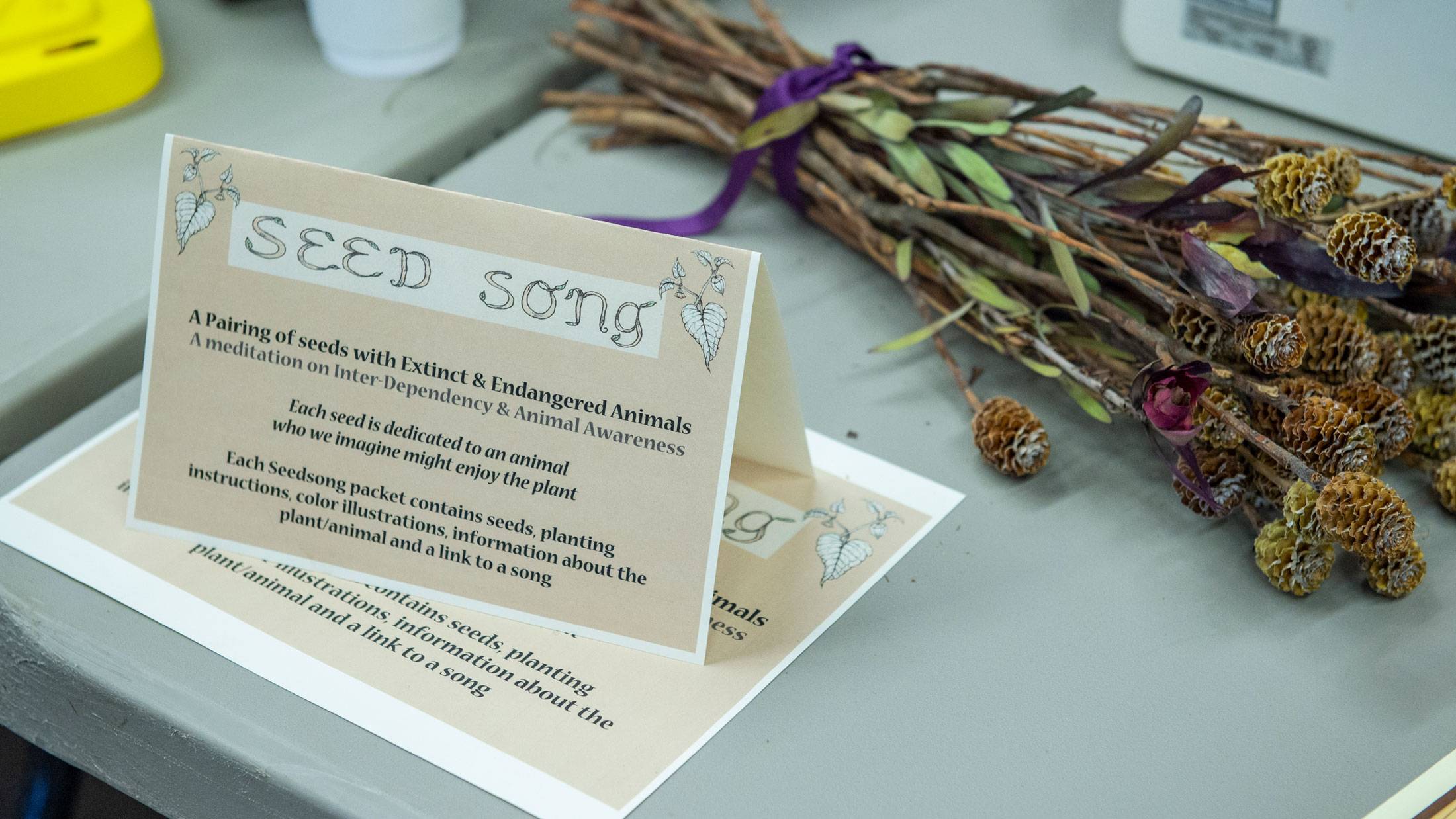Throughout late March and early April, students and community members gathered at the Paul J. Schupf Studio Arts Center for Grafters X Change 2022, activities surrounding ecological conservation and creative arts. Assistant Professor of Art and Art History Margaretha Haughwout constructed Grafters X Change, and has been hosting the series since she moved to Madison County three years ago.
On March 26, a large group of students and local citizens joined together, despite cold weather and light rain, to work on hot compost and asphalt cutouts and to hear insightful talks on topics such as redline agroforestry, tree care, and Indigenous food sovereignty. The day of events was one of six, planned in a pandemic-responsible schedule, and it fostered a community of creative thinkers and environmentalists in the greater Hamilton area.
Grafters X Change also co-created the Guerrilla Grafters, an activism-based art group that grafts fruit onto non-fruit bearing trees in urban areas and green deserts in order to create connections between rural, urban, and post-industrial landscapes. They invite artists and ecologists from the surrounding area to share their knowledge and address agricultural issues as a community through the scion exchange.
“This year we were especially interested in abolitionist landscapes and Guerrilla food forestry,” Haughwout says. “We had nut tree foragers show up to do spontaneous teach-ins about old nut tree stands in the area. We had Jackie Sumell here to talk about abolitionist landscapes, Jason Moore talking about what working class environmentalism looks like.”
Students spent time within the Schupf Studios learning about the different scions of fruit bearing trees, understanding the intricacies of their trading processes. Scion exchanges occur frequently as winter transitions into spring and trees begin to bear leaves and fruit for a new season of growth. Fruit tree growers from around the area brought branches, pruned from their trees, to exchange; this allows for more biodiversity, as well as bonding within a community of fruit-tree enthusiasts.
After witnessing the growth and enthusiasm surrounding Grafters X Change’s development during the past three years, including during the pandemic, Haughwout anticipates more growth and engagement in years to come.
“It’s my vision that, each year, Grafters X Change grows in number and meaningful networks; in sharing of resources, skills, and labor across urban, post-industrial, and rural landscapes; and in terms of backyard, community, and guerrilla food forestry,” Haughwout says. “I am also excited to develop methods to track the exchanges of seeds and scion wood from orchard to orchard, and ways of communicating how biological materials are traveling across communities.”
